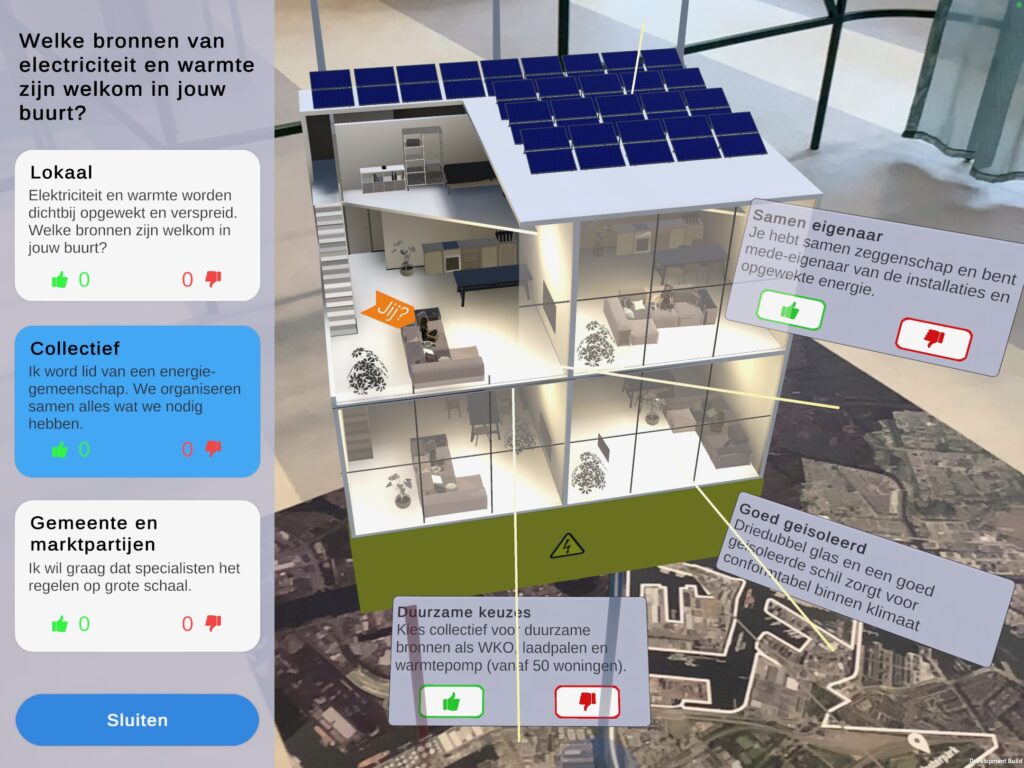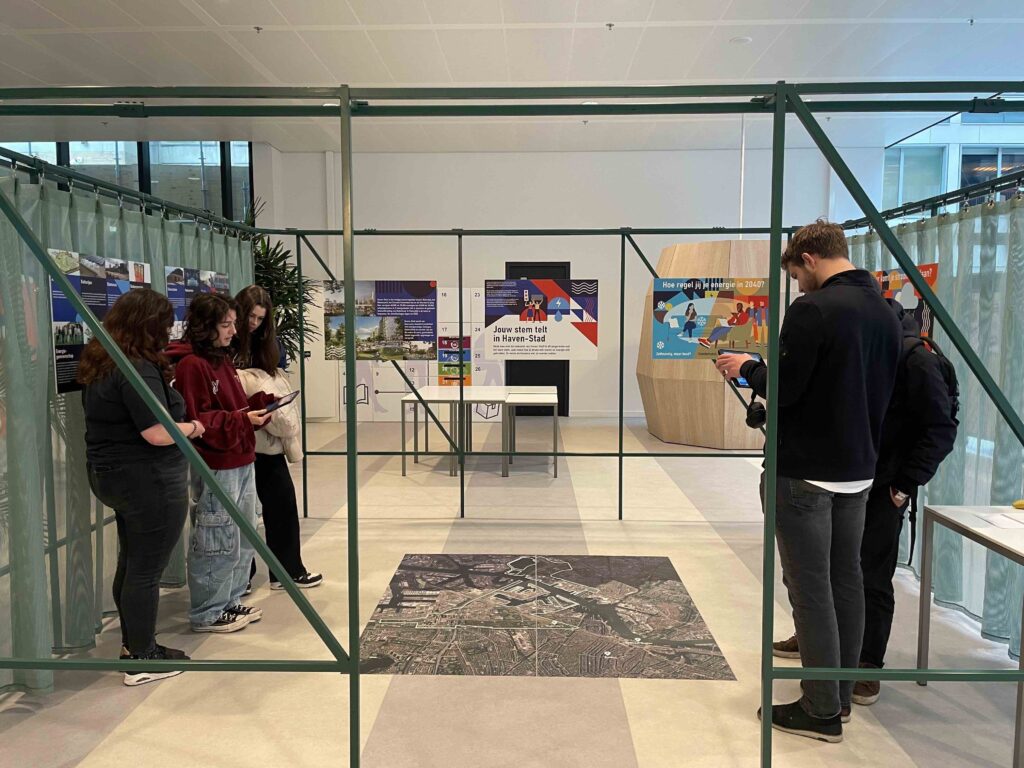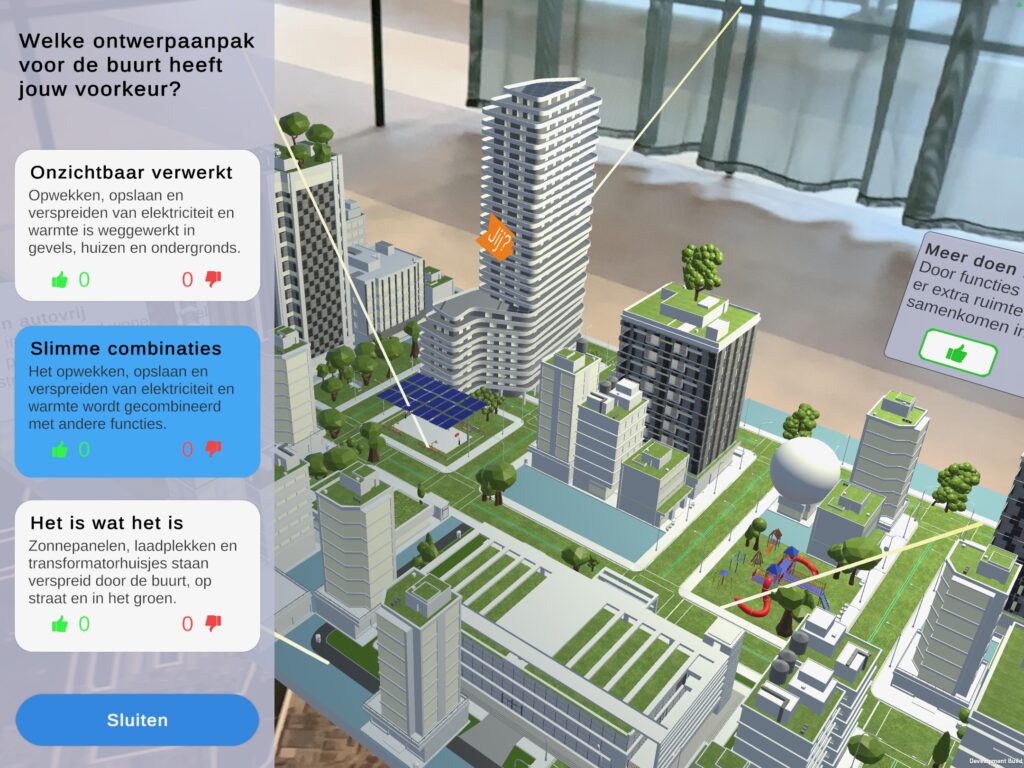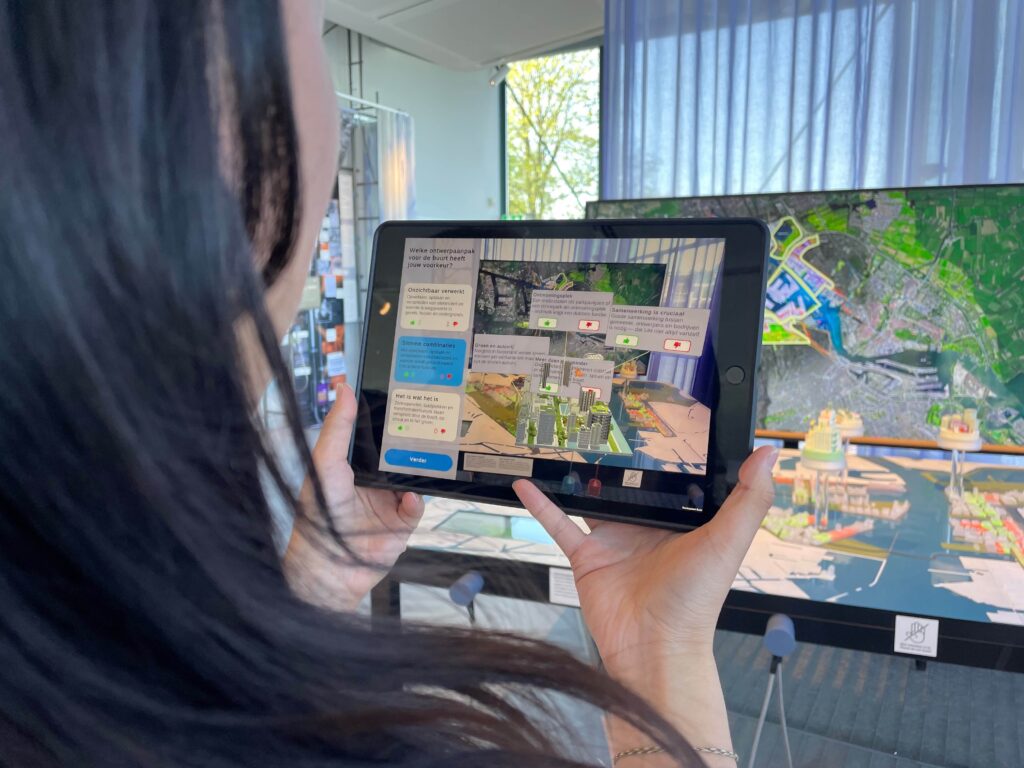Haven-Stad Prototype Testing at the AUAS Jakoba Mulderhuis and Arcam
News & Updates
Another iteration of the Haven-Stad prototype was successfully tested by more than 100 students in the entrance hall of the AUAS Jakoba Mulderhuis and at Arcam architecture centre.
Testing the Haven-Stad prototype

Developed by Studio Bertels, the prototype uses augmented reality to interact with the multimedia installation Model-City Haven-Stad at Arcam. It can also be deployed at other public locations using printed maps. Young adults are invited to join a youth council that will evolve over time. Rather than functioning as a stand-alone tool, the interactive model is part of a series of moderated events. At the Jakoba Mulderhuis, however, students mainly used the model individually or in small groups to explore the complexity of a future energy system in Haven-Stad. They investigated what such a system might look like and how it could be organized at three levels: home, street, and neighbourhood. Supporting information was provided to help them make informed decisions and refine their ideas.

The transition to a sustainable energy system is complex. Different technologies—and how they are implemented—have varied impacts on the urban landscape. Beyond choosing between technologies such as heat networks, hydrogen, heat pumps, geothermal energy, nuclear power, and batteries, the transition also requires new forms of thinking and collaboration among governments, residents, social organizations, businesses, energy providers, and grid operators. At the neighbourhood level, this may include collective ownership of the energy system. This raises important questions:
-
- How can future residents be informed about the organisation of the energy system in Haven-Stad?
-
- How can we understand their preferences regarding the visibility and impact
of different energy infrastructures?
- How can we understand their preferences regarding the visibility and impact
-
- Are young adults open to joining energy cooperatives, or do they prefer the local government and market to take the lead?
-
- Where should electricity and heat come from in their future neighbourhood—and how visible should those sources be?

After a short introduction, most students spent considerable time engaging with the tool and the subject matter. Short follow-up conversations were held to understand their choices and collect feedback, especially on how they experienced the spatial and visually realistic approach of the prototype.

A preliminary look at the participants’ responses indicates that most students prefer the local government and market to manage the future energy system, rather than opting for collective or independent solutions. A detailed evaluation is forthcoming. However, the initial insights and feedback can serve as a starting point for a long-term exploration—possibly led by an urban curator—aimed at building a community around a local energy system.
Author: Linda Vlassenrood